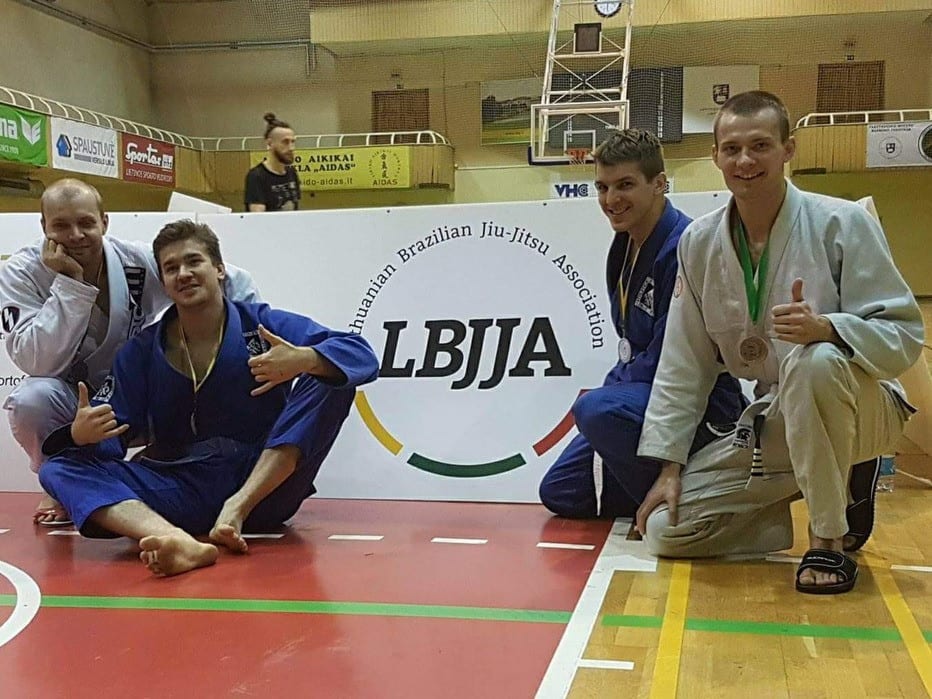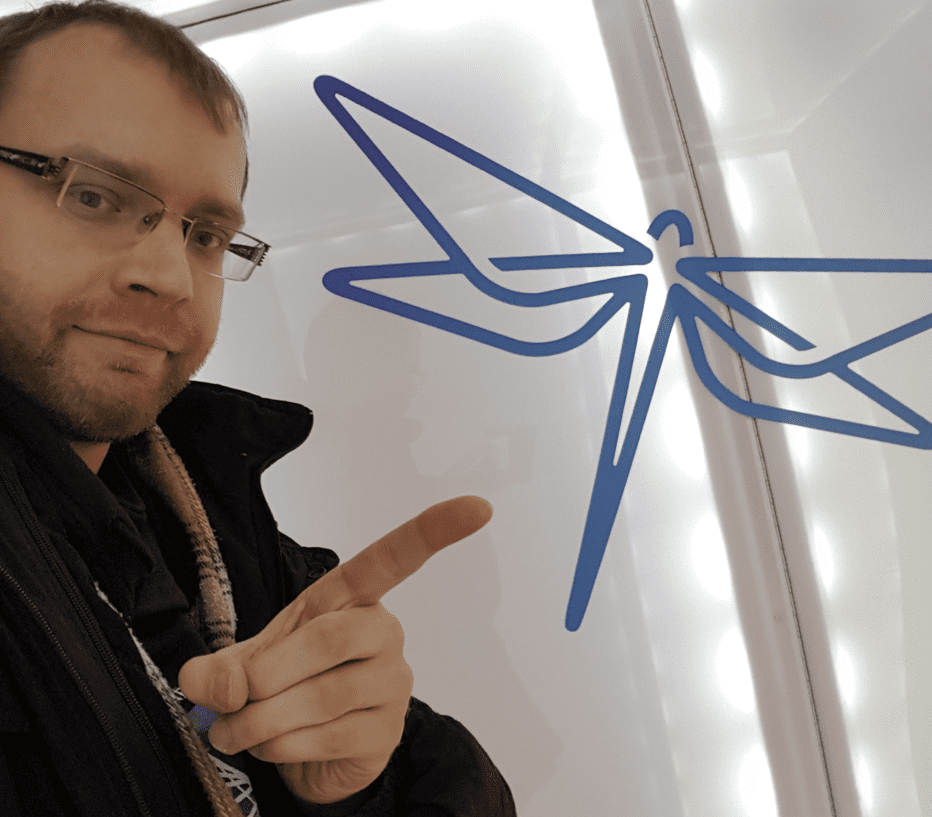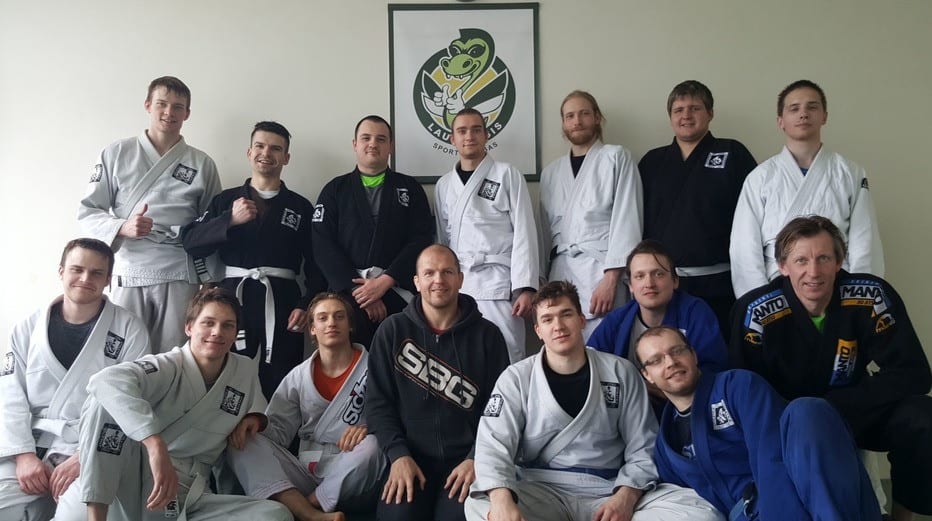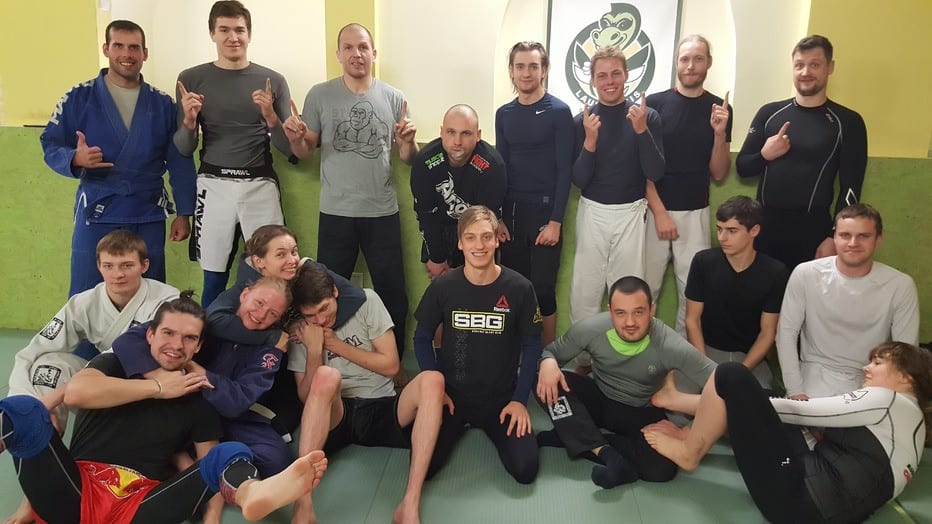Featured affiliated academy: Sporto Klubas Laumžirgis, Lithuania BJJ

About the gym:
Where is the gym located?
The gym rents 300 m2 full-time in the southern part of Vilnius, Lithuania. Here you can see the precise location of our gym, Laumžirgis (which means “dragonfly” in Lithuanian): https://goo.gl/maps/DyP5Y6tSDmo. It’s not easy to find us when you’re there in person though – just contact us through Facebook and we’ll send you a detailed how-to-find-us guide.
How many people train in Sporto Klubas Laumžirgis, Lithuania BJJ?
It varies – sometimes greatly – depending on the time of the year. We had around 40 people show up at least once this January, for instance; some only have time to train few times per month, whereas others train consistently for 6+ hours per week. We consider ourselves an MMA club; about half of the people train Jiu Jitsu and wrestling, while others are only interested in boxing and striking, so we separate the classes and then people can build their own schedule based on what they enjoy.
Is the gym growing – if so by how many new members each month or year?
The gym has seen slow but steady growth over the past few years. In the early days it wasn’t uncommon to only have 2-4 people in the class. Now that we’re open to the public, we usually get 10-20 new people showing up each year when the new season starts, and several of them stay and become long-term members, which is what we’re looking for. Jiu Jitsu and combat spots in general is not something you can really learn in a month, or even a year.
What are the highest and lowest belt grades training?
In our Jiu-Jitsu classes we have blue and white belts. We also have higher belts visiting, but because they’re visitors they don’t count in our statistics.
When did the gym open?
Sporto Klubas Laumžirgis, Lithuania BJJ started as a group of enthusiasts interested in training together in 2007. Our club, Laumžirgis, was officially founded in 2009. We started renting a place full-time in 2014, and moved to our current location in 2017.

Some facts about you:
Name: Irmantas Radavičius
Age: 33
Belt: Blue
Profession: I teach Computer Science at Vilnius University
Years in BJJ: My first class was in 2007
Other martial arts: I started with Aikido back in 1999, tried a lot of different things over the years, and finally settled with MMA. Meaning, one accepts what is useful and rejects what is useless, and wants to be efficient in all ranges and areas of combat.
Currently living in: Vilnius, Lithuania
Originally from: Also Vilnius, Lithuania
Please tell us the story of how your gym came into existence:
The aikido community I started with introduced me to martial arts, for which I will always be grateful. However, that community was like a cult, with lots of hierarchy, bowing, and rituals, which is ultimately very at odds with what I’m about.
I was looking for a community where I would feel happy. I was also interested in self-defense and functional martial arts, since I wanted to feel safer and more confident; able to trust that what I do actually works. Aikido did not give me that, so I quit in 2006 and went through many clubs looking for somewhere to belong. Sometimes I didn’t like the teaching style, sometimes the community was a bit off, sometimes the techniques were very strange, and since I was a student at the time sometimes the classes were just too expensive.
Thus me and few other guys started training on our own. My first experience with Jiu Jitsu was in 2007, when I went to a grappling seminar by Ričardas Piepolis, a famous grappling coach in Lithuania. A lot of what we did after that was gleaned from articles, blogs, books, and videos. I remember watching Matt Thornton’s video series, as well as numerous others. Jiu Jitsu was just not really present in Lithuania as it is now. I was reading Matt Kirtley’s and Christian Graugart’s blogs, and when they announced they were going to Estonia to teach a training camp in 2009, I knew I had to be there. This is when we first started travelling to different places for training, and where we first met Priit Mihkelson, a then-purple belt from Estonia (now a black belt) who we now consider our head coach and mentor. From that point onwards, everything changed.

Sporto Klubas Laumžirgis, Lithuania BJJ
Tell us about the people that train in the gym – who are they?
We’ve had people from 15 to 56 years old, guys and girls (sadly only a few of them, but their number is growing as well), most of whom are hobbyists training for various personal reasons. Many of them work in IT-related fields, which, given my own profession, is not at all surprising! The majority of new members are brought to our club by friends.
Why do they train in the gym?
People in our club train for various reasons (social, safety, health, fun, etc.) that tend to change over time. Most newcomers come because of self-defense, or because they want to try something new and maybe find a new hobby. Once they decide to stay and are there for a long time, however, I think it evolves into something different – it is always the case that they simply like the activity and the community, and all the benefits those two things bring into their life.
What are some of the challenges of running a BJJ gym in general and in your location specifically?
Since we’re a small gym we do most of the things ourselves, including book-keeping, cleaning, repairs, etc. We don’t have many staff members, and that limits us since there are only so many things that can be done per day, and only so many classes that one can run and teach. Retaining our members thus becomes really important, as otherwise we have to start learning/teaching everything from scratch again, and at the same time it’s very hard to lose a member whom we consider a necessary part of the community. There are many activities in Vilnius, and it’s not uncommon for people simply to decide not to pursue martial arts anymore and take up something else. The long grind is sadly not for everybody.

How do you see the future for BJJ in your area?
BJJ has been constantly growing here over the past few years. When we started there were no black belts at all in Lithuania; now there are. I suspect and hope that BJJ will continue to grow and will also continue to evolve in every sense, including techniques, coaching methods etc.
What’s the best thing about your gym?
Unarguably, it’s the community that we have. It’s very important to have a space where you feel welcome and safe, and it becomes even more important if you train martial arts, which by definition is a risky and dangerous activity. No building and no mat space can ensure that by itself; it is always about the people. It’s the students that empower any coach and make his work worthwhile, it’s the training partners who help you get better, and are there when you succeed and you struggle, and so on. Personally, I consider the people I train with to be some of my best friends that I’m happy to have.
What would you recommend Globetrotters to see in your area apart from the inside of your gym?
Vilnius is a great city. If you’re into museums and architecture, we have our Old Town and some sights that date back to the Middle Ages. Lithuania is a small country, meaning travel distances are relatively small – we have beautiful nature and some places to visit in the countryside, too. If you’re into food, there are many cuisines in Vilnius. If you want to try more traditional Lithuanian food, try some dishes from potatoes and/or meat, and we have good beer too. If you’re into overall leisure there aren’t many things that you can’t find in Vilnius; we have big commercial and leisure centers, with restaurants, cafes, cinemas, and lots of athletic and fun activities.
Really, come to visit, and when you do you are most welcome to come to our gym and say hi!















